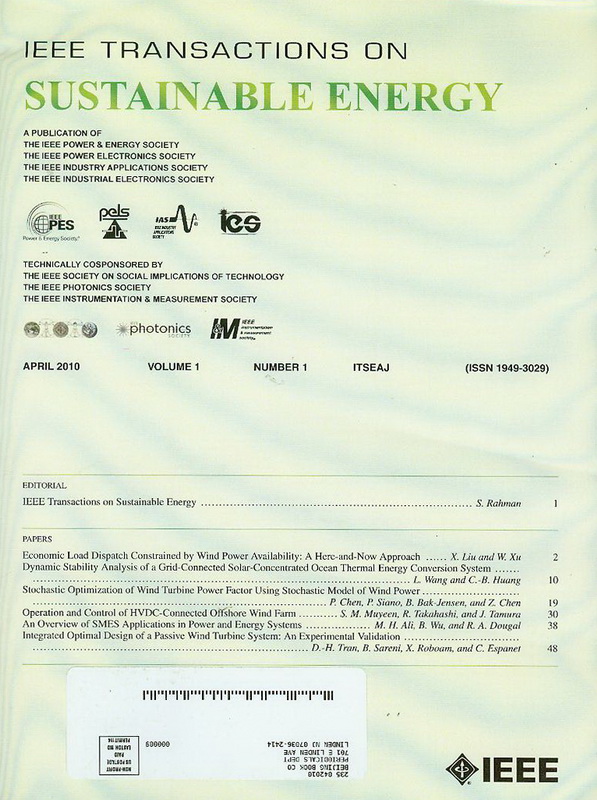高渗透可再生能源深度脱碳电力系统的可再生能源发电、HESS和AESS联合多阶段规划
IF 10
1区 工程技术
Q1 ENERGY & FUELS
引用次数: 0
摘要
高可再生能源渗透率电力系统的进一步脱碳,面临着由于火力发电等常规机组调节能力有限,可再生能源的日间间歇性和可再生能源与负荷需求的季节性不平衡问题。基于电池储能系统(BESS)的常规解决方案成本过高,难以实现。为了解决上述问题,引入氢储能系统(HESS)和氨储能系统(AESS)逐步取代热发电。具体而言,首先将HESS和AESS纳入具有碳减排约束的多阶段产能扩张规划(MSCEP)模型。在此基础上,采用改进的柱生成(CG)和dantzigg - wolfe分解(DWD)嵌入式求解方法,有效求解大规模MSCEP模型。最后,研究了中国的一个现实系统。结果表明,本文提出的方法能够在不同可再生能源渗透水平下保证较高的供电可靠性(PSR),避免了现有典型基于场景的方法(TSM)在高渗透水平下可能导致的低PSR问题($\geq$ 30%). Moreover, HESS and AESS are essential to reduce the cost of decarbonization. Especially under the goal of carbon neutrality, the contribution of HESS and AESS in reducing levelized cost of energy (LCOE) reaches 12.28% and 14.59%, respectively, leading to a levelized cost of carbon reduction (LCOCr) of 998 RMB/t.本文章由计算机程序翻译,如有差异,请以英文原文为准。
Joint Multi-Stage Planning of Renewable Generation, HESS, and AESS for Deeply Decarbonizing Power Systems With High-Penetration Renewables
The further decarbonization of power systems with high renewable energy penetration faces the problem of inter-day intermittence of renewable energy sources (RES) and the seasonal imbalance between RES and load demand, due to the limited regulation ability of conventional units such as thermal generation. Regular solutions based on battery energy storage system (BESS) are too costly to be practical. To address issues above, hydrogen energy storage system (HESS) and ammonia energy storage system (AESS) are introduced to gradually replace thermal generation. Specifically, first, HESS and AESS are incorporated into the multi-stage capacity expansion planning (MSCEP) model with carbon emission reduction constraints. Yearly data with hourly time resolution are utilized for each stage to accurately describe the intermittence of RES. Then, an improved column generation (CG) with Dantzig-Wolfe decomposition (DWD) embedded solution approach is used to efficiently solve the large-scale MSCEP model. Finally, a real-life system in China is studied. The results indicate that the proposed method can guarantee high power supply reliability (PSR) under different renewable energy penetration levels, avoiding the low PSR problem that may be caused by the existing typical scenario-based method (TSM) under high penetration ($\geq$
求助全文
通过发布文献求助,成功后即可免费获取论文全文。
去求助
来源期刊

IEEE Transactions on Sustainable Energy
ENERGY & FUELS-ENGINEERING, ELECTRICAL & ELECTRONIC
CiteScore
21.40
自引率
5.70%
发文量
215
审稿时长
5 months
期刊介绍:
The IEEE Transactions on Sustainable Energy serves as a pivotal platform for sharing groundbreaking research findings on sustainable energy systems, with a focus on their seamless integration into power transmission and/or distribution grids. The journal showcases original research spanning the design, implementation, grid-integration, and control of sustainable energy technologies and systems. Additionally, the Transactions warmly welcomes manuscripts addressing the design, implementation, and evaluation of power systems influenced by sustainable energy systems and devices.
 求助内容:
求助内容: 应助结果提醒方式:
应助结果提醒方式:


